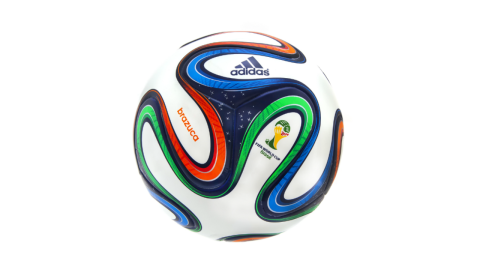The Official 2014 World Cup Ball is a Marvel of Engineering

What’s the Latest?
To say that the response to the Jabulani, the official game ball of 2010 World Cup, was contentious would be something of an understatement. The Adidas-designed ball was lambasted by players such as Italy’s Giampaolo Pazzini (who called the Jabulani “a disaster”) and Brazilian keeper Julio Cesar (who famously compared it to “a supermarket ball”). According to Popular Science’s David Cassilo, the Jabulani’s downfall was its susceptibility to drag. The ball’s flawed design made it vulnerable to the whims of the wind and caused lots of awkwardness when crossed about the pitch.
Now, with the 2014 World Cup in Brazil only weeks away, Adidas expects its new Brazuca ball to fly truer than its fickle predecessor. The secret? The new design features deeper seams and a textured surface limiting the amount of outside air affecting the ball’s flight.
What’s the Big Idea?
Soccer (or football, if you’re European or pretentious) may not strike observers as the kind of game from which to expect major technological advances. The sport is grounded in a novel concept — just get the ball in the net — and governing organizations such as FIFA have been insufferably stingy when it comes to the introduction of in-game technology such as instant replay. Yet the innate simplicity of soccer always leaves the door open for nature and physics to play a part in impacting the results of each match. The way a ball plays in the wind or the amount of grip a player gets on a rain-soaked throw-in have the power to determine wins, draws, and losses.
Keep an ear open for player reports and media coverage of the Brazuca during the next few weeks. if Adidas is correct in their assumption that they’ve created a better ball, chances are you won’t hear much.
Continue Reading at Popular Science
Photo Credit: Jon Le-Bon/Shutterstock





